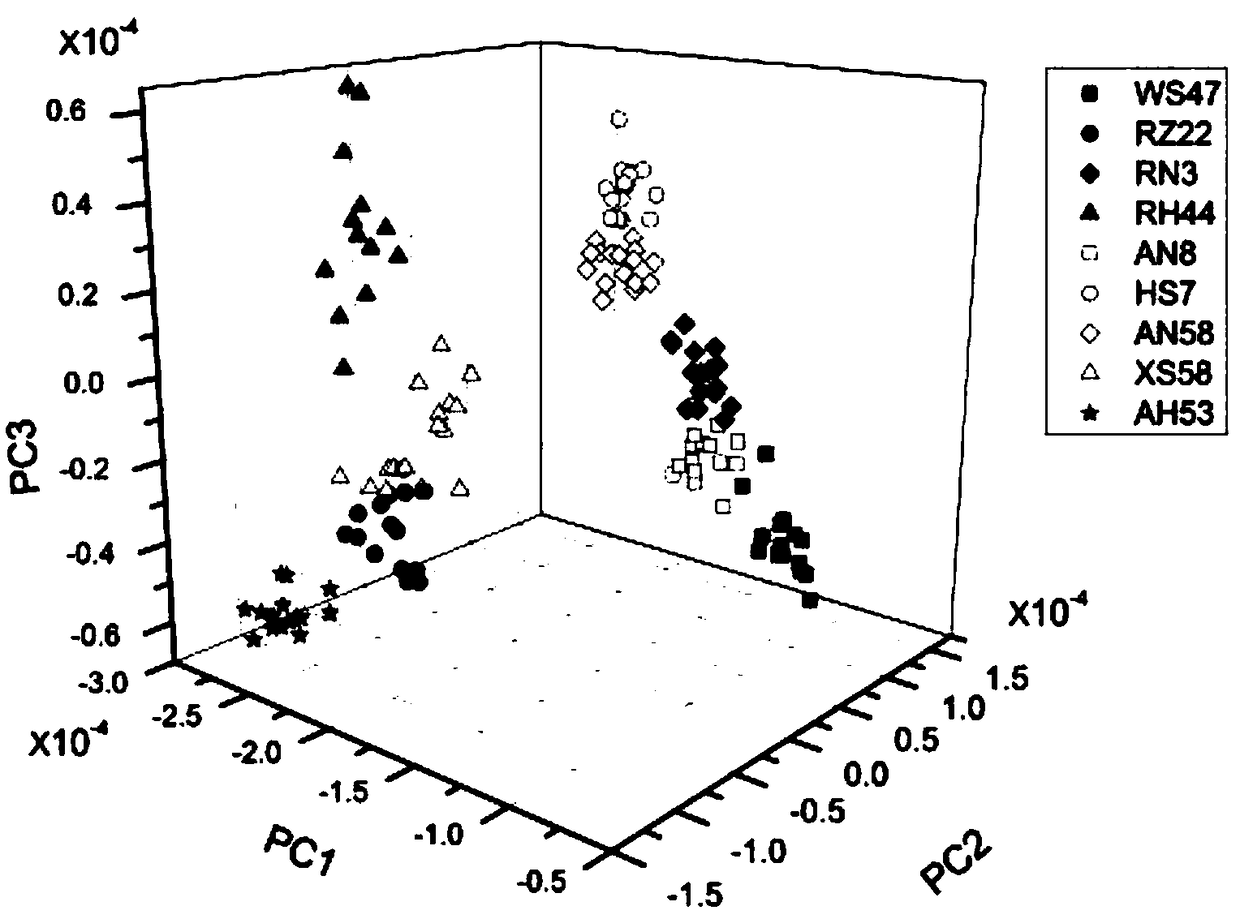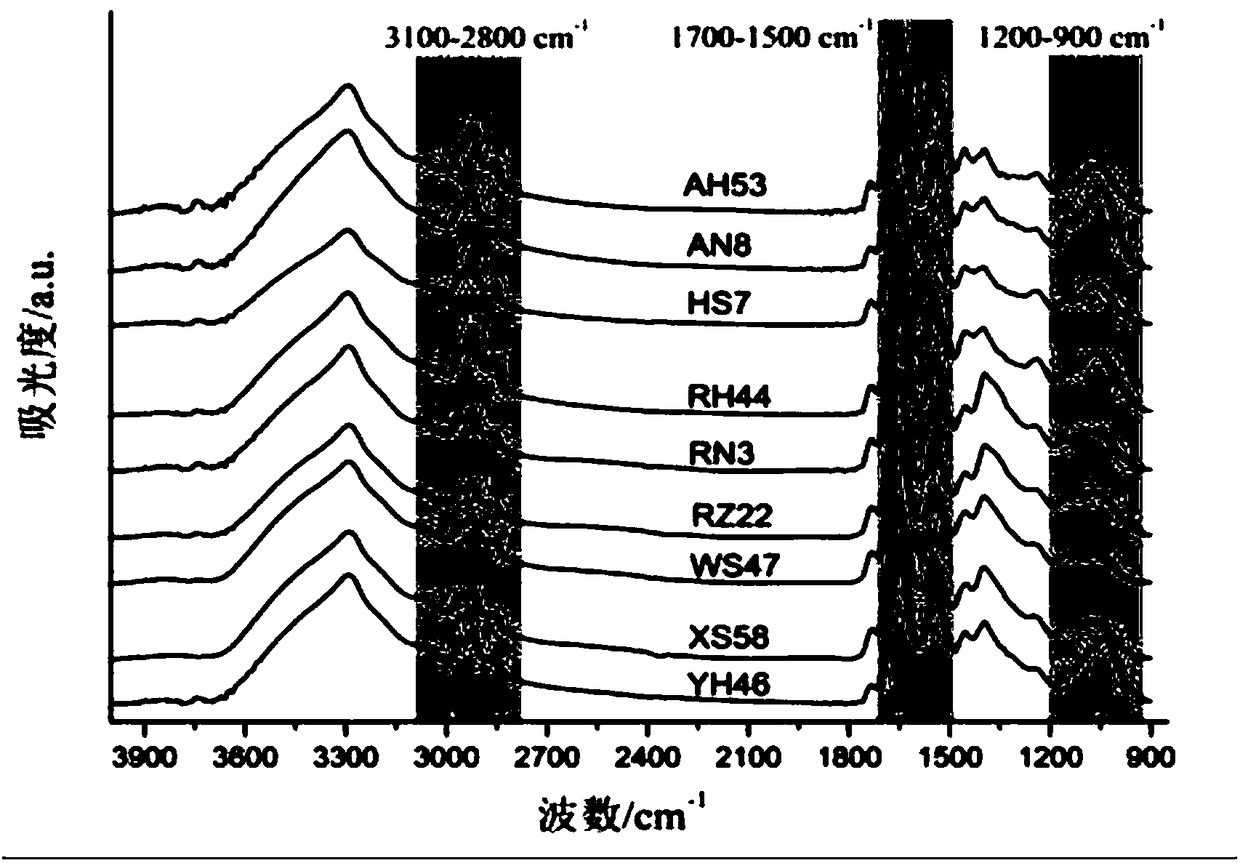Rapid identification method for spiral seaweeds having different adsorption capacities of copper ions
A technology for adsorption capacity, spirulina, used in measurement devices, color/spectral property measurement, material analysis by optical means, etc.
- Summary
- Abstract
- Description
- Claims
- Application Information
AI Technical Summary
Problems solved by technology
Method used
Image
Examples
Embodiment 1
[0041] A method for quickly identifying spirulina with different adsorption capacities for copper ions, comprising the steps of:
[0042] S1, collecting infrared spectra: using Nicolet 380 (Thermo Scientific) infrared spectrometer to collect infrared spectra of different germplasm Spirulina, the number of scans during measurement is 128 times, and the measurement range is 900-4000cm -1 , resolution 4cm -1 ;
[0043] S2, infrared spectrum processing: utilize Bruker Opus 6.5 software to preprocess the infrared spectrum obtained in step S1, calculate the second order derivative for the pretreated infrared spectrum to obtain the second order derivative infrared spectrum, and select characteristic spectral data in the second order derivative infrared spectrum Using Eigenvector software for principal component analysis;
[0044] S3, cluster analysis: select step S2 principal component analysis obtained principal component eigenvalue as the classification variable of different germ...
Embodiment 2
[0046] A method for quickly identifying spirulina with different adsorption capacities for copper ions, comprising the steps of:
[0047] S1. Collect infrared spectra: mix spirulina powder with distilled water to prepare a suspension, take 50 μL of the suspension and apply it to BaF 2 On the infrared substrate, dry overnight at 50°C, and use the Nicolet 380 (ThermoScientific) infrared spectrometer to collect the infrared spectra of different germplasm Spirulina. The number of scans during the measurement is 128 times, and the measurement range is 900-4000cm -1 , resolution 4cm -1 ;
[0048] S2, infrared spectrum processing: use Bruker Opus 6.5 software to preprocess the infrared spectrum obtained in step S1, obtain the second derivative infrared spectrum for the pretreated infrared spectrum, and select the wavenumber as 900 in the second derivative infrared spectrum -1200cm -1 Principal component analysis was performed on characteristic spectral data using Eigenvector softw...
PUM
 Login to View More
Login to View More Abstract
Description
Claims
Application Information
 Login to View More
Login to View More - R&D
- Intellectual Property
- Life Sciences
- Materials
- Tech Scout
- Unparalleled Data Quality
- Higher Quality Content
- 60% Fewer Hallucinations
Browse by: Latest US Patents, China's latest patents, Technical Efficacy Thesaurus, Application Domain, Technology Topic, Popular Technical Reports.
© 2025 PatSnap. All rights reserved.Legal|Privacy policy|Modern Slavery Act Transparency Statement|Sitemap|About US| Contact US: help@patsnap.com



